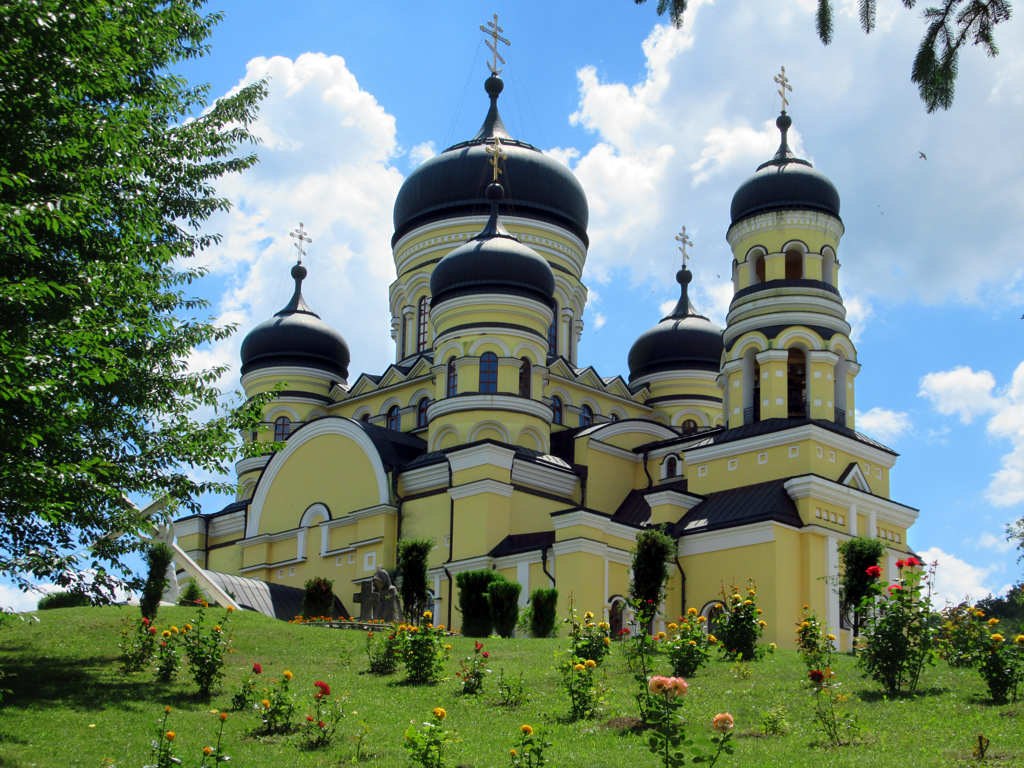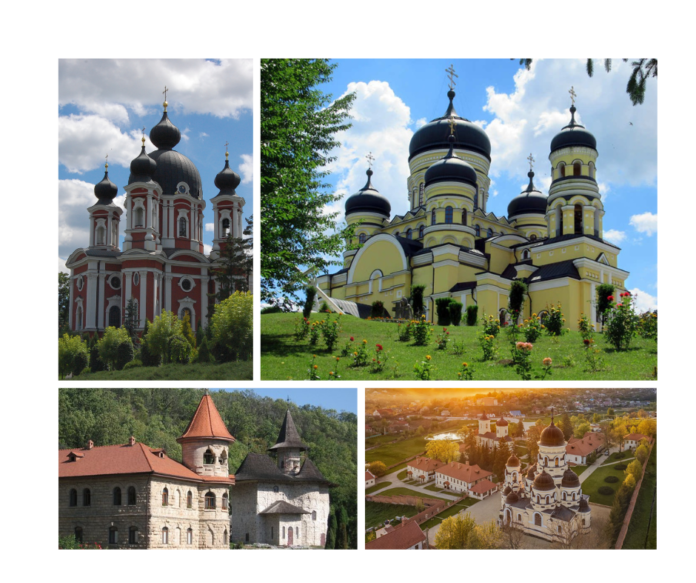Moldova is a country with a rich religious tradition and a long history of monasteries. These historical monuments have withstood the test of time and have become an important tourist destination for those interested in spirituality and culture. In this article, we will explore the most beautiful monasteries in Moldova, places where architecture and religious art blend with the natural beauty of the surrounding landscapes.
- Căpriana Monastery
Located in a picturesque forest area, 40 kilometers northwest of Chișinău, is one of the oldest monasteries in Moldova – Căpriana (founded in 1429). It was the residence of the Metropolitan of Moldova for a long time and was founded by rulers, including Ștefan cel Mare.
Initially, the monastery was entirely built of wood, but later, in 1545, the “Assumption of the Virgin Mary” summer church was built in stone. Căpriana also housed the largest monastery library in Moldova, with precious gifts from rulers. After being closed and devastated in the post-war years, it reopened among the first in 1989, soon becoming a symbol of national revival. The monastery can be visited daily.
Other attractions in the area that can be visited include the “Căpriana-Scoreni” landscape reserve, the “Oak of Ștefan cel Mare,” and the oldest reserve in Moldova, “Codri.”

FOR THE MOST IMPORTANT NEWS, FOLLOW US ON TWITTER!
2. Hâncu Monastery
In 1678, in a forest area, at the source of the Cogâlnic River (approximately 55 kilometers west of Chișinău), the great stolnic Mihail Hâncu founded a convent at the request of his daughter. The wooden churches and monastic cells in the 17th century were often devastated by Tatar invasions. As a result, the “St. Parascheva” monastery periodically remained deserted. In 1835, a stone summer church in the Russian-Byzantine style was built, and later in 1841, the winter church was erected.
There are several water springs near the monastery, one of which has increased mineralization. The monastery can be visited daily.

3.Noul-Neamţ Monastery (Chiţcani)
During the 15th to 17th centuries, the territory of Moldova was covered by a dense network of monasteries and hermitages, thanks to the extensive founding activities of rulers such as Alexandru cel Bun, Ștefan cel Mare, Petru Rareş, and others. In total, there were 70 monastic settlements functioning in the Romanian Principalities. Among the monasteries for monks, the most significant was the Neamţ Monastery.
Neamţ Lavra, founded in the second half of the 14th century, is one of the oldest and richest monasteries in Moldova, which, over five centuries, has established its significance as a major cultural center and has carried its reputation and traditions far beyond the borders of Moldova.

4. Rudi Monastery
Located in the northern part of the Republic of Moldova, approximately 200 kilometers from Chișinău, the village of Rudi is one of the most interesting places to visit. Here, we discover prehistoric remains in a natural cave spanning about 100 meters, an exceptional landscape reserve, ancient promontory fortifications (4th-3rd century), two ring-shaped earth fortresses (9th-12th century) known as “Turkish Plate” and “Germanariu,” a rural community with rich traditions, and more. However, the main attraction in the area is one of the oldest monasteries in Moldova. Throughout several centuries, the monastery has preserved a traditional monastic way of life, and the “Holy Trinity” church, built in 1777, is considered a representative example of the old Moldovan style of religious architecture. The church is located in a unique natural setting in the valley of the Bulboana River, a right tributary of the Dniester River.

5. Curchi Monastery
Curchi Monastery is a male monastery in the Republic of Moldova and one of the most significant monuments of Bessarabian architecture. It is located in the Codrii Orheiului (Orhei Forests), in the village of Curchi, Orhei District. The architectural ensemble was formed in the 18th and 19th centuries. It consists of five churches, two buildings with monastic cells, an abbey, several auxiliary rooms, an orchard, a skete with an archondaric (monastic residence) located 500 meters from the monastery, and a stone basin. The “Nativity of the Mother of God” church, built in 1775 by Iordache Curchi, is an example of Neo-Byzantine style, while the “St. Nicholas” church (1808-1810) is built in the classical style with elements of Baroque. The entire ensemble is surrounded by a tall stone wall. During the Soviet period, the monastery was transformed into a psychiatric hospital.



